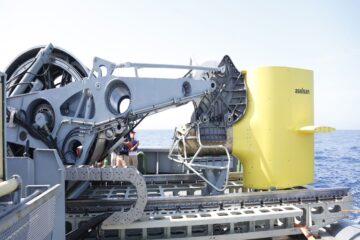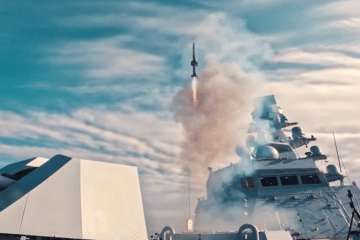The video show an ESSM surface to air missile fired from the Turkish Navy frigate Göksu hit a target drone. Conducted in mid-december 2018, this was the first live fire test involving the ÇAFRAD system which illuminated the target drone to guide the missile and eventually hit it.
TCG Göksu, a Perry-class Frigate (the former USS Estocin), is used as a test platform for the ÇAFRAD program. A prototype ÇAFRAD system is fitted on the helicopter deck of the frigate.

According to our colleagues from turkishnavy.net the technology demonstrator prototype installed on board of TCG Göksu has only one set of multifunctional phased array radar and illumination radar.
According to ASELSAN, ÇAFRAD combines indigenous design with latest technological advances including fully solid state transmit/receive modules, digital signal processing, pulse compression, multiple target tracking, electronic beam stabilization along with advanced electronic counter-counter measures.

The ÇAFRAD radar is being developed for the future TF-2000 Frigates anti air warfare of the Turkish Navy. It will come in the form of an integrated mast combining four main sensors (from top to bottom):
– An active, non-rotating IFF Antenna
– An X-band active phased array multi-function radar (150 km range and track capacity in excess of 1000 targets)
– An X-band active phased array illumination radar (150 km range)
– An S-band active phased array long range search radar (450 km range and track capacity in excess of 2000 targets
According to Turkey’s Defence Industry Directorate (SSB) , the Factory Acceptance Test for the IFF, multi-function radar and illuminationr radar is ongoing and will be completed at the beginning of 2019.
In a second phase, the long range radar will be developed and produced as a complete set (integrated mast). A total of 4 ÇAFRAD systems will be supplied. The first delivery of ÇAFRAD system is planned for 2023.
With information (and picture) from our colleagues at turkishnavy.net





